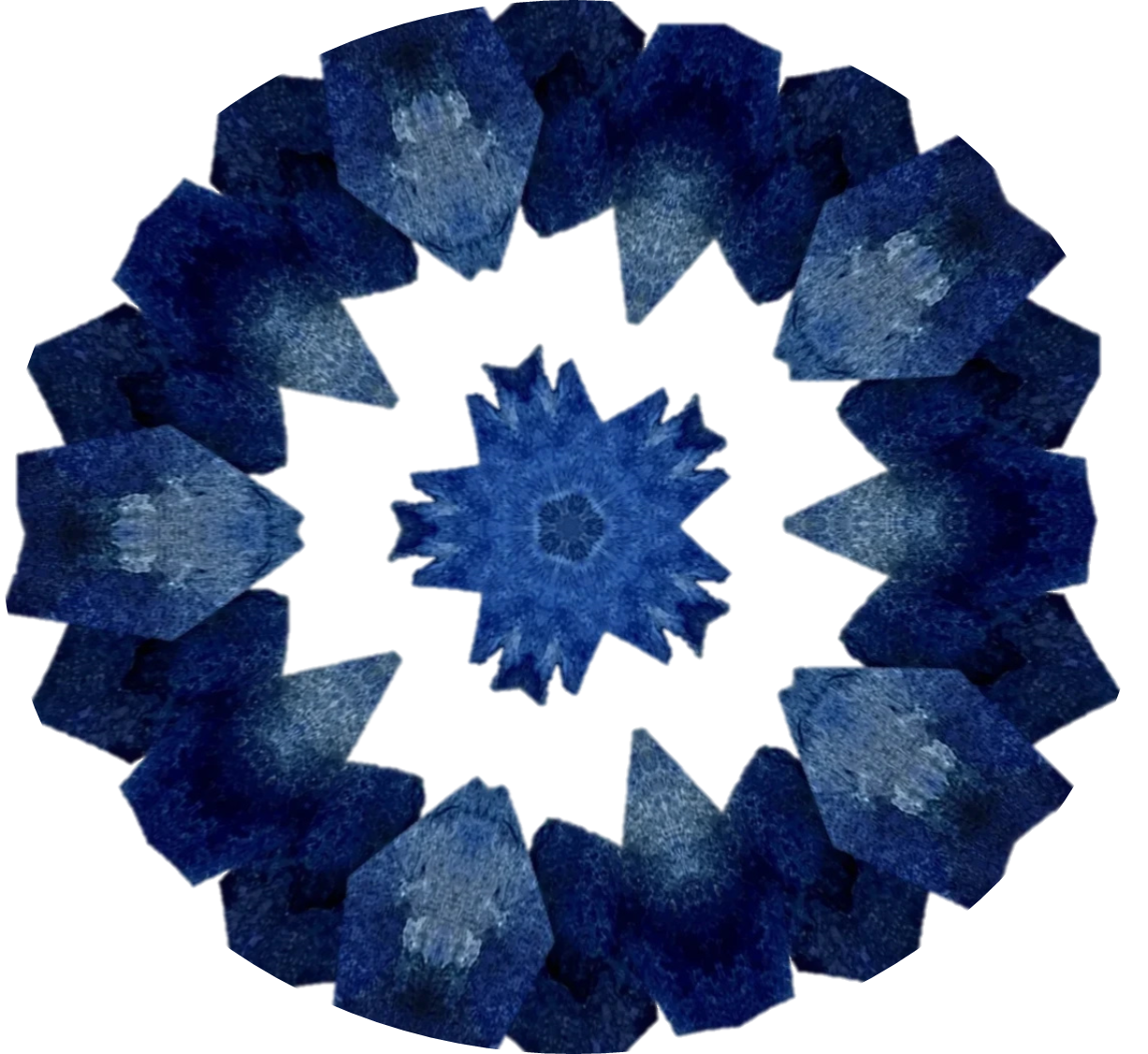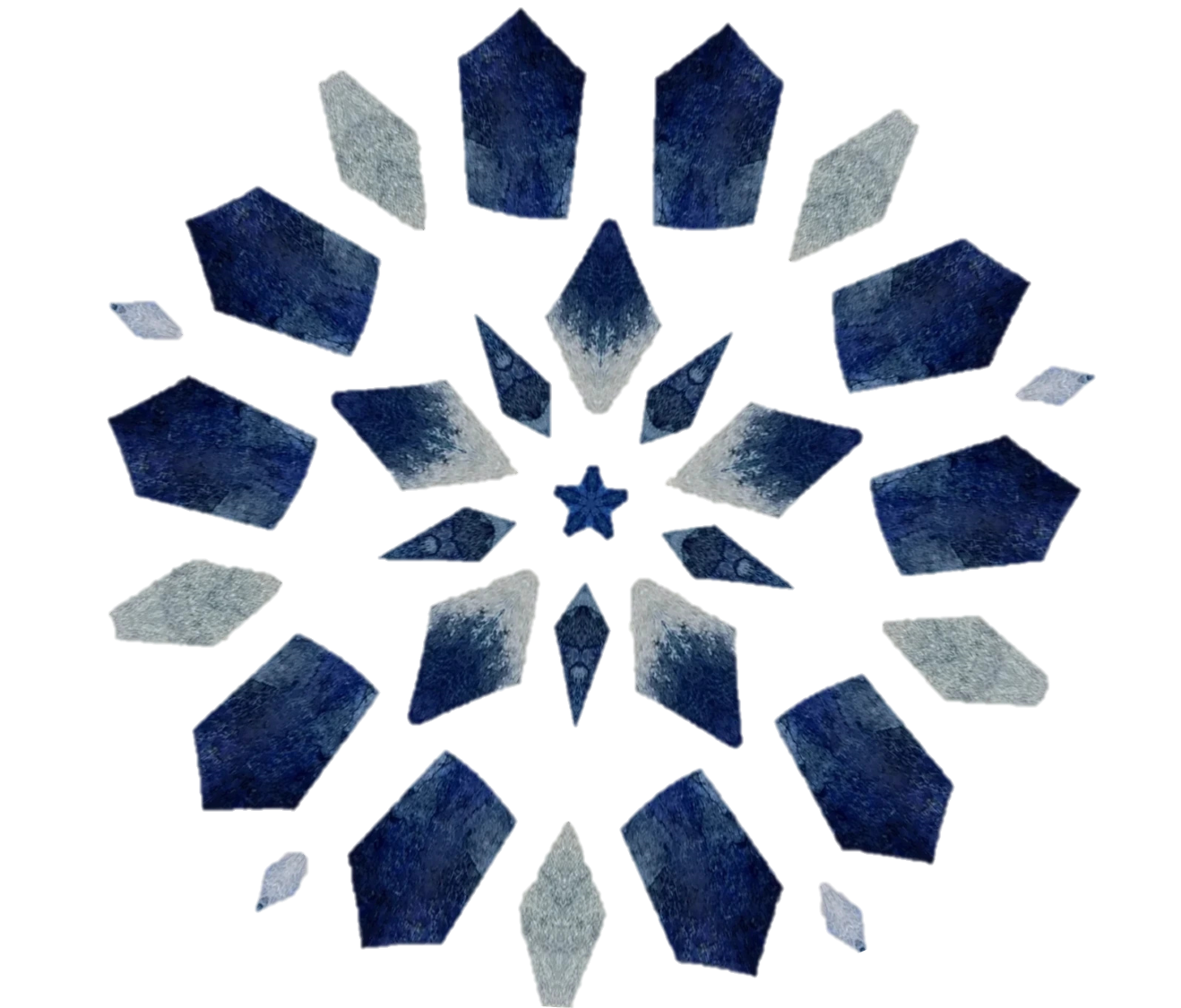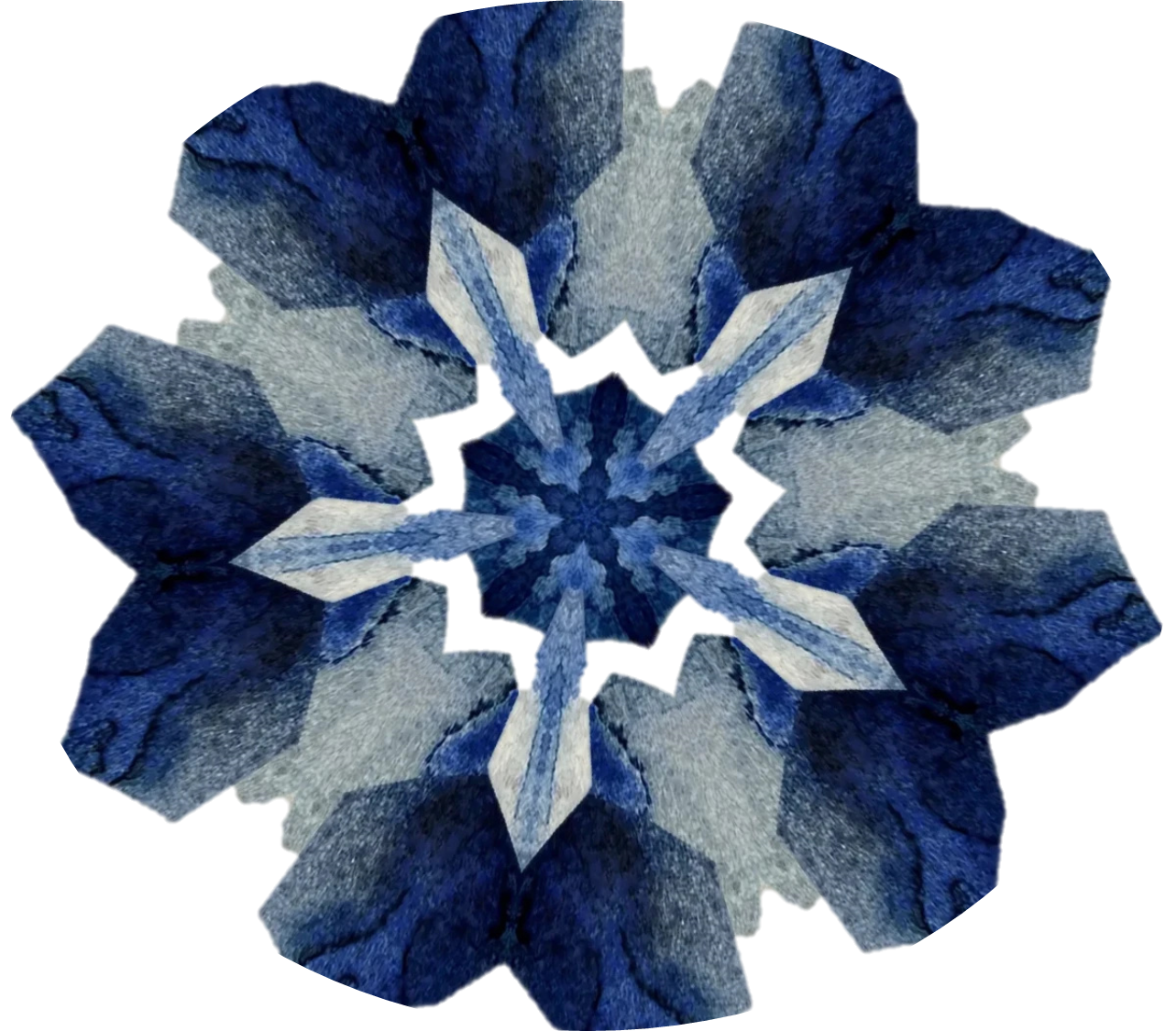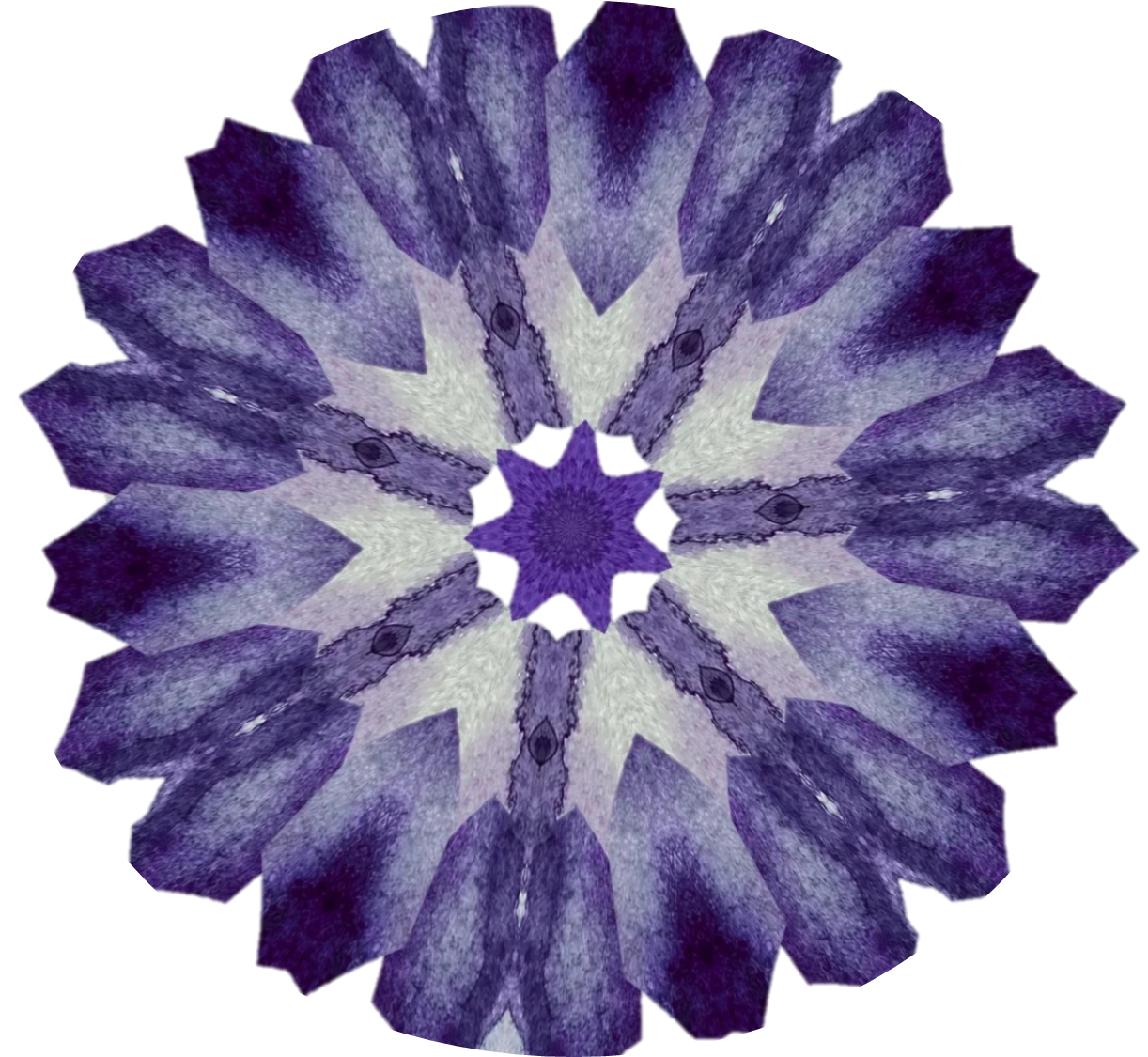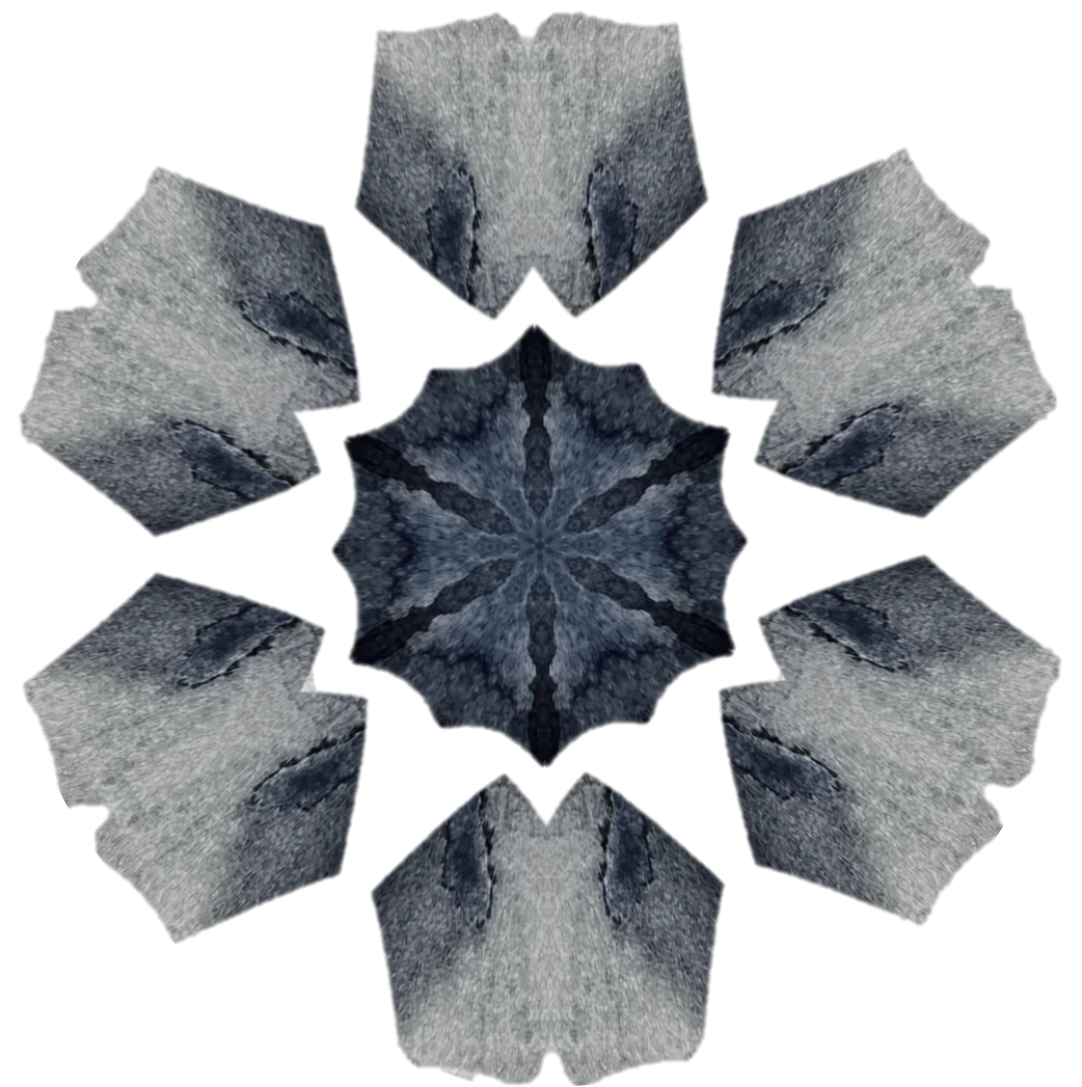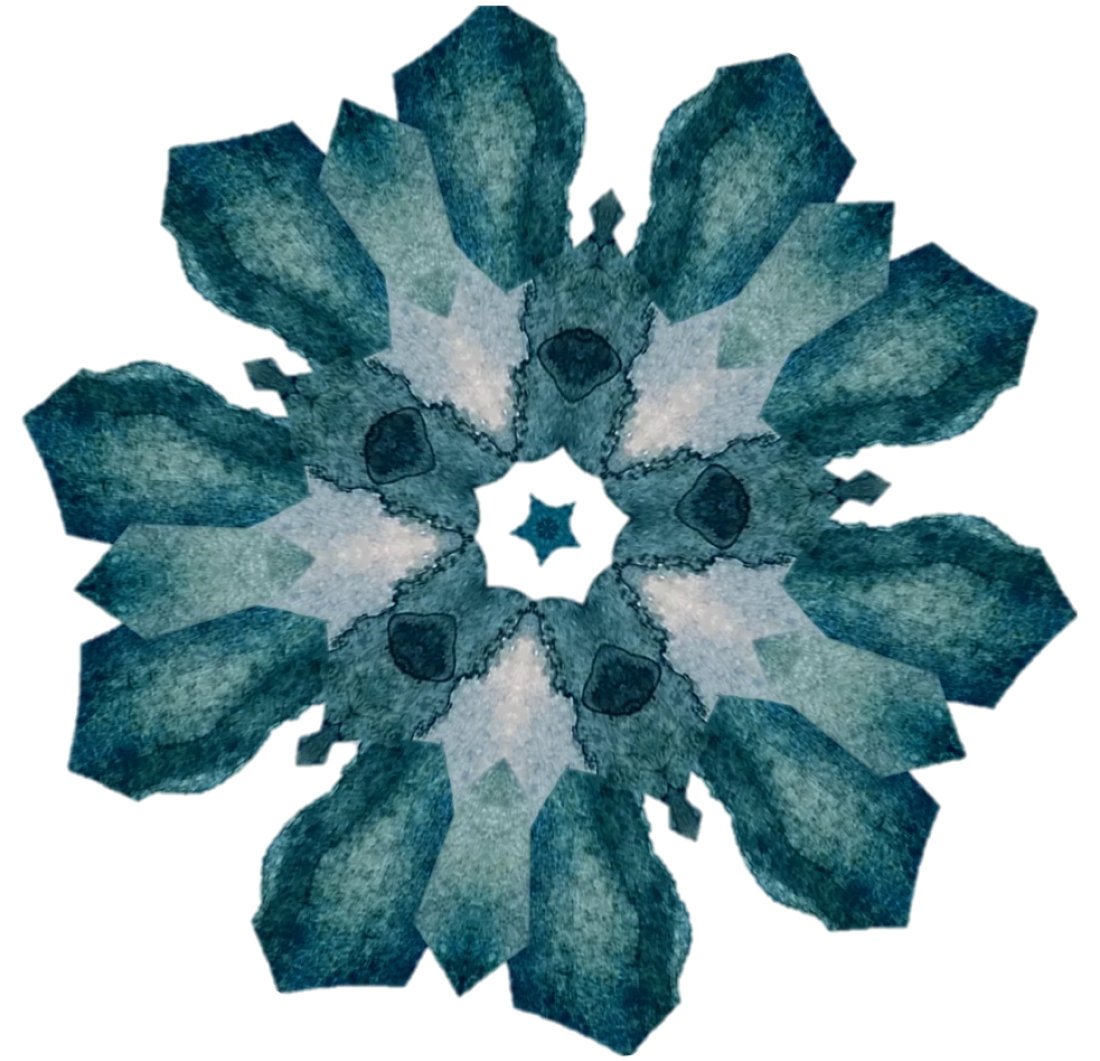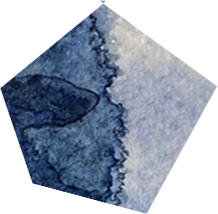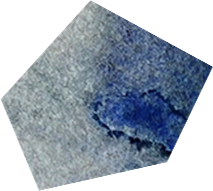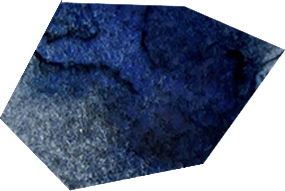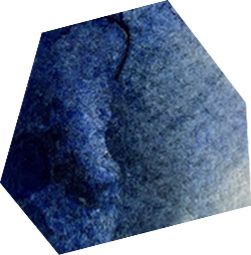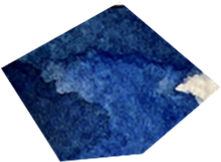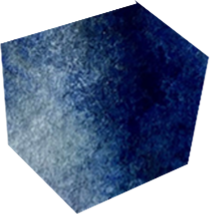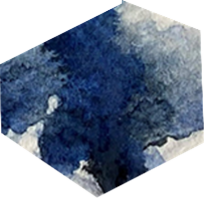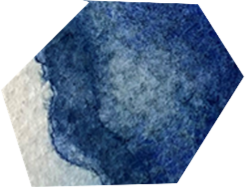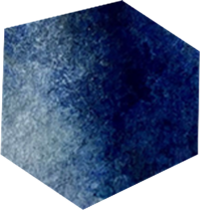Kaleidoscoping
Kaleidoscoping is the conceptual compound formed through the singular noun ‘kaleidoscope’ and the slang noun ‘scoping’. The kaleidoscope used in this inquiry is a ‘teleidoscope’, an instrument that creates organic tessellations when directed towards outside objects such as shards of mosaics. ‘Scoping’, meanwhile, refers to the ‘practice of examining’ to ‘appreciate’, in this case the difference in the new patterns that shards of mosaic form during kaleidoscoping.
Kaleidoscoping works the second problem posed in Aim…ish: ‘how maps (mosaics) contribute to the power of posing new problems related to teacher becoming’.
Kaleidoscoping Powers
Kaleidoscoping is the practice of speculative futuring where past presentsare opened onto new vistas in mosaics. This means that Kaleidoscoping is where this thesis attends to the problem/solution loop; in other words, how a solution opens onto vistas where (new) problems arise. Deleuzian problems are thus not inherently ‘bad’ things, as everyday understanding implies; instead, living consists of posing and solving problems continuously. A look now at how this translates into the context of this thesis.
The Work-Integrated Teacher Education-program (WITE-program) was the solution to problems that society and (higher) education were/are facing. But this solution does not necessarily solvethe problems schools are facing. This is partly because some of problems that the WITE-program sought to solve seem to belong to what Deleuze’s Bergson ([1966]1988) terms as ‘false’ problems. False problems confuse quantity (more adults in school) with quality (what adults and how) and product (society/(higher) education as a homogenous stable category) with process (singular unfolding needs in individual assemblages)[1]. To put it plainly, a becoming-teacher working as a teacher at a school during the first semester of a WITE-program, creates new problems.
Mosaics also suggest that schools – and all bodies involved in the actualization of education – are facing and solving partly different problems than those that the WITE-program set out to solve. But the mismatch is not a surprise from a Deleuzian perspective. Since,
[o]nce we ”forget” the problem, we have before us no more than an abstract general solution, and since there is no longer anything to support that generality, there is nothing to prevent the solution from fragmenting into the particular propositions which constitute its cases. Once separated from the problem, the propositions fall back into the status of particular propositions whose sole value is designatory. Consciousness then attempts to reconstitute the problem, but by way of the neutralised double of particular propositions (interrogations, doubts, likelihoods, hypotheses) and the empty form of general propositions (equations, theorems, theories...). ([1968]2014, pp. 211-2)
In short, the WITE-program is a policy solution, abstract and general, whereas the problems education and school assemblages are facing are singular and demand singular solving. Moreover, in the light of mosaics, the actualization of the WITE-program in school assemblages does not qualify as a uniform format; rather, there seems to be as many versions of the WITE-program as there are school assemblages to work in.
The powers of kaleidoscoping are therefore the ways in which events in mosaics become undone and redone as novel tessellations which I propose as onto-epistemological experimentations; we get to pose new problems. Kaleidoscoping thereby resists the arrest of stable stories. The point of kaleidoscoping is thus not to repeat school events, but to secure the ferality of problem-posing. The combining and modulation going on during kaleidoscoping echoes the ontology of school life itself and processes that create newness in unfolding presents. Just like your visit becomes a singular travel through this thesis cartography that will give rise to new problems.
The Present as a Teacher’s Storage Cabinet to Rummage
This thesis suggests that becoming-teacher invents and makes molecular alliances in, and due to, inexorable and capricious presents. The inexorability and capriciousness of presentness affects becoming-teachers such that inexorability prompts action while capriciousness displaces the ability to anticipate action.
In an unfolding present where perception is proposed as “mak[ing] space available to us “in the exact proportion” in which we have time available” (Deleuze, [1966]1988, p. 75), the virtual (past and future) of the actual (present) are turned into a kind of teacher’s storage cabinet that becoming-teacher rummages to make molecular alliances (go to Relational Architecting). Whilst rummaging, becoming-teacher modulates temporalities through chronomorphing (go to Chronomorphing) to speed things up or slow things down to better match unfolding needs. These modulations are vulnerable and courageous processes that require imagination and experimentation.
What becoming-teacher has at hand at any given moment therefore becomes the potential for teacher becoming. It therefore makes a difference who and what is available for a becoming-teacher there and then. Prior experiences, similarly, turn into constraints or prospective resources to mobilize and put into play. This future-oriented practice of the present is where the potentiality of change resides – and “[c]hange is [after all] at the heart of the educational project” (Bodén et al., 2021, p. 2). And the name of change is becoming. The futures of difference that kaleidoscoping refer to are not illusions out of reach, but a time already touched in unfolding presents as part of becomings.
(Past) Present Futures
Past present futures in mosaics – in other words, the futures of past (school) presents – have thus already been touched by rhythm bodies engaging in relational architecting and chronomorphing in school assemblages; for example, through read-act-ing on the multitude of affects during a math class where a becoming-teacher attunes to the corporeal expression of children (go to mosaic Holy Grailing). Past present futures have also been touched in becoming-teacher attempts to name enigmas in unfolding encounters, where a surprised Oh… defibrillates affective detours in exchange for having to judge events. This kind of maneuver has elsewhere been proposed as a pedagogy of hesitation (go to mosaic Oh…).
Facer[2] states that
rather than treating the present as the impoverished handmaiden to ‘a brighter future’ or as the anteroom to the apocalypse, instead see[…] the present as an abundant resource, a site of rich and powerful possibilities. (Facer, 2013, p. 141)
An effect of the present taken ‘as a site of rich and powerful possibilities’, or what in Deleuzian language would be the virtual/actual, is that rhythm bodies always mingle with the future. The future is therefore no longer a mirage, “[t]he virtual is the future-past of the present” (Massumi, 1992, pp. 36-7). This way of looking at the future comes to underscore the living present as an ethical event. The present is the space-time where we do (higher) education, the present is also where we begin sketching the futures of (higher) education.
A becoming-teacher mending impossible schedules by sprinting through corridors and thereafter considering the lesson and teaching a failure (go to mosaic Tick-Tock, Tick-Tock), are present futures where teacher education dropout and teacher desertion begins. Said differently, there is no gap between present and future; instead, the future of (higher) education is with-in the sprinting body, with-in having no time to address a ‘why are they saying baboon’-comment, with-in the backwards booklet. The future of (higher) education is also with-in the thirteen lessons where becoming-teacher during the first semester of a WITE-program is left to teach all alone as employed teacher (go to Molar Mosaics). The future of (higher) education is also in the twenty-one lessons during which becoming-teacher is supposed to learn the teacher profession from teaching with only classroom assistants present. But it is also in each caring encounter between becoming-teachers and children.
However, the present is also where teacher education dropout and teacher desertion can be stopped. For the real is virtual/actual. And the virtual-actual real is an open becoming, not a deterministic system. This is to say that
education research needs to resist the lure of seeking ever more precise knowledge about the future and instead, to find ways to mobilise the present as a resource of powerful contingency and possibility. ([italics in original] Facer, 2013, p. 142)
Kaleidoscoping futures of difference is therefore an ethical event where past present futures of school situations are transformed into present futures of difference.
The inquiry-machine has thus followed bodies in school assemblages and mapped how becoming-teachers tenaciously solve encountered problems in ingenious ways. In fact, sprinting was a solution to the organizational problem of scheduling. By mapping how encounters unfold and the effects of affect, mosaics present how bodies actualize solutions that show ‘how the contingency of the present affects teacher becoming – and how becoming-teacher unfolds in capricious and inexorable presents’. That is, this inquiry maps effects of present-affect. And unfolding affect in education is hereby proposed as a “future-making pedagogy” (Albuquerque & Pischetola, 2024, p. 433).
Teachers of the Present
Each becoming-teacher enrolled into a WITE-program is learner and teacher. This is consequently a thesis not merely about ‘student teachers’ in a WITE-program, but a thesis about teachers. Taken as employed teachers, mosaics offer glimpses into what it is like to work as a teacherduring the first semester enrolled into a WITE-program.
Thus, synthetic boundaries between phases (teacher student/pre-service teacher versus qualified teacher/in-service teacher), spaces (campus versus workplace), practices (studying versus working), and functions (teacher versus learner), become blurred. The inquiry instead asks how does it work?Events suggest that each encounter with another body is a prospective threshold for becoming. The encounter with another rhythm body therefore becomes the ‘teachers of the present’ that invite becoming-teacher ‘to do with me’:
We learn nothing from those who say: 'Do as I do'. Our only teachers are those who tell us to 'do with me', and are able to emit signs to be developed in heterogeneity rather than propose gestures for us to reproduce. (Deleuze, [1968]2014, p. 27)
It is consequently in the encounter that “affect becomes pedagogy” ([emphasis in original] Albuquerque & Pischetola, 2024, p. 435).
The teachers of the present are accordingly the children, adults, sounds, spaces, and materials encountered during a workday, that all invite becoming-teacher to ‘do with me’. And although we will witness a certain inexorability that prompts becoming-teacher to ‘do with me’ with limited or no time to prepare for what comes next, these encounters also open to new problems, new solutions and new affects. This is the potency of lived presents where world becomes position, a ‘nonposition’ of embodied pre-consciousness:
In the nonposition, I therefore bring with me everything I know but without knowing exactly what to do, and what is supposed to happen. No experts and expertise, no generalized knowing, except knowing that there is always more to know and not know – the unknown. Turning my attention towards that which is not yet there. (Reinertsen, 2021, p. 478)
In this ‘nonposition’, the ‘teachers of the present’ become allies to ‘do with’.
Now, an overview of the kaleidoscopings in this thesis.
Kaleidoscopings
Relational Architecting: A kaleidoscoping about the ways in which becoming-teachers engage with the material-spatial conditions in school assemblages during capricious presents.
Chronomorphing: A kaleidoscoping about the ways in which becoming-teachers slow down or speed up processes in school assemblages during inexorable presents.
Naming Enigmas: A kaleidoscoping about the ways in which becoming-WITE-program, becoming-teacher, and becoming-inquiry-machine suspend representational thought in transient encounters through speculative onto-epistemolog-ing.
Assemblages: A kaleidoscoping that clusters mosaics shards according to school assemblage.
Experiment: A kaleidoscoping that invites you to join experimentation. Click and create randomized tessellations – create futures of difference!
References
Albuquerque, P., & Pischetola, M. (2024). Affect as future-making pedagogy: a post-qualitative inquiry in Brazilian primary schools. Pedagogy, Culture & Society, 32(2), 433-451.
Bodén, L., Ceder, S., & Sauzet, S. (2021). Posthuman conceptions of change in empirical educational research. Reconceptualizing Educational Research Methodology, 12(1).
Deleuze, G. ([1966]1988). Bergsonism. Zone.
Deleuze, G. ([1968]2014). Difference and repetition. Bloomsbury Academic.
Facer, K. (2013). The problem of the future and the possibilities of the present in education research. International Journal of Educational Research, 61(1), 135-143.
Massumi, B. (1992). A user's guide to capitalism and schizophrenia: deviations from Deleuze and Guattari. (Swerve Ed.) MIT Press.
Reinertsen, A. B. (2021). The art of not knowing: The position of non-knowledge as activisms. International Review of Qualitative Research, 14(3), 476-482.
[1]“[S]eeing nothing but differences in degree or differences in intensity where, more profoundly, there are differences in kind” (Deleuze, [1966]1988, p. 20).
[2]Facer makes the above comment in response to a quote in Tsing and Pollman (2005) that challenge the ways in which we conceive the future (2013). [Tsing, A., & Pollman, E. (2005). Global futures: The game. In D. Rosenberg & S. Harding (Eds.), Histories of the future (pp. 105–123). Duke University Press.]
